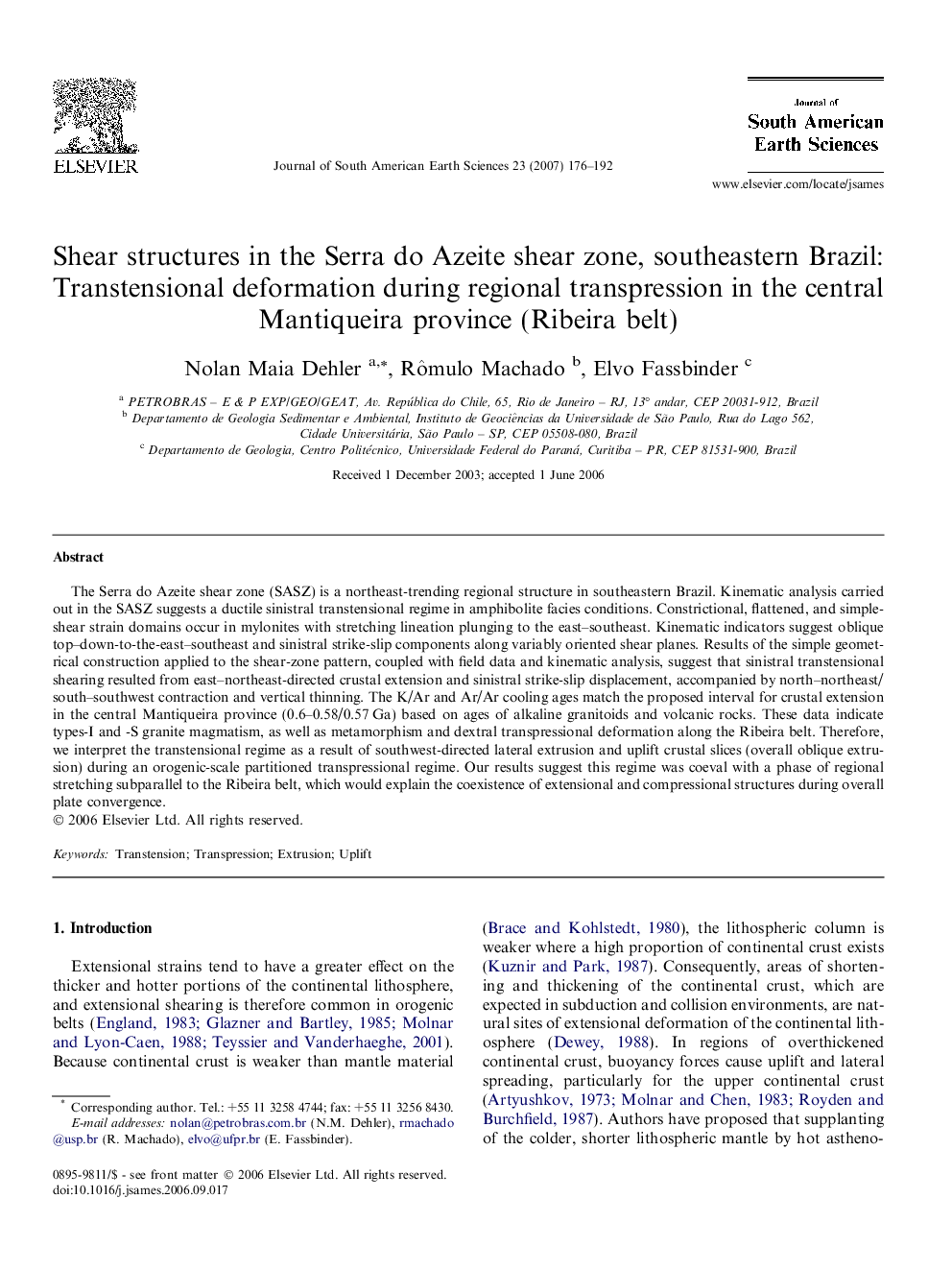| Article ID | Journal | Published Year | Pages | File Type |
|---|---|---|---|---|
| 4683065 | Journal of South American Earth Sciences | 2007 | 17 Pages |
The Serra do Azeite shear zone (SASZ) is a northeast-trending regional structure in southeastern Brazil. Kinematic analysis carried out in the SASZ suggests a ductile sinistral transtensional regime in amphibolite facies conditions. Constrictional, flattened, and simple-shear strain domains occur in mylonites with stretching lineation plunging to the east–southeast. Kinematic indicators suggest oblique top–down-to-the-east–southeast and sinistral strike-slip components along variably oriented shear planes. Results of the simple geometrical construction applied to the shear-zone pattern, coupled with field data and kinematic analysis, suggest that sinistral transtensional shearing resulted from east–northeast-directed crustal extension and sinistral strike-slip displacement, accompanied by north–northeast/south–southwest contraction and vertical thinning. The K/Ar and Ar/Ar cooling ages match the proposed interval for crustal extension in the central Mantiqueira province (0.6–0.58/0.57 Ga) based on ages of alkaline granitoids and volcanic rocks. These data indicate types-I and -S granite magmatism, as well as metamorphism and dextral transpressional deformation along the Ribeira belt. Therefore, we interpret the transtensional regime as a result of southwest-directed lateral extrusion and uplift crustal slices (overall oblique extrusion) during an orogenic-scale partitioned transpressional regime. Our results suggest this regime was coeval with a phase of regional stretching subparallel to the Ribeira belt, which would explain the coexistence of extensional and compressional structures during overall plate convergence.
